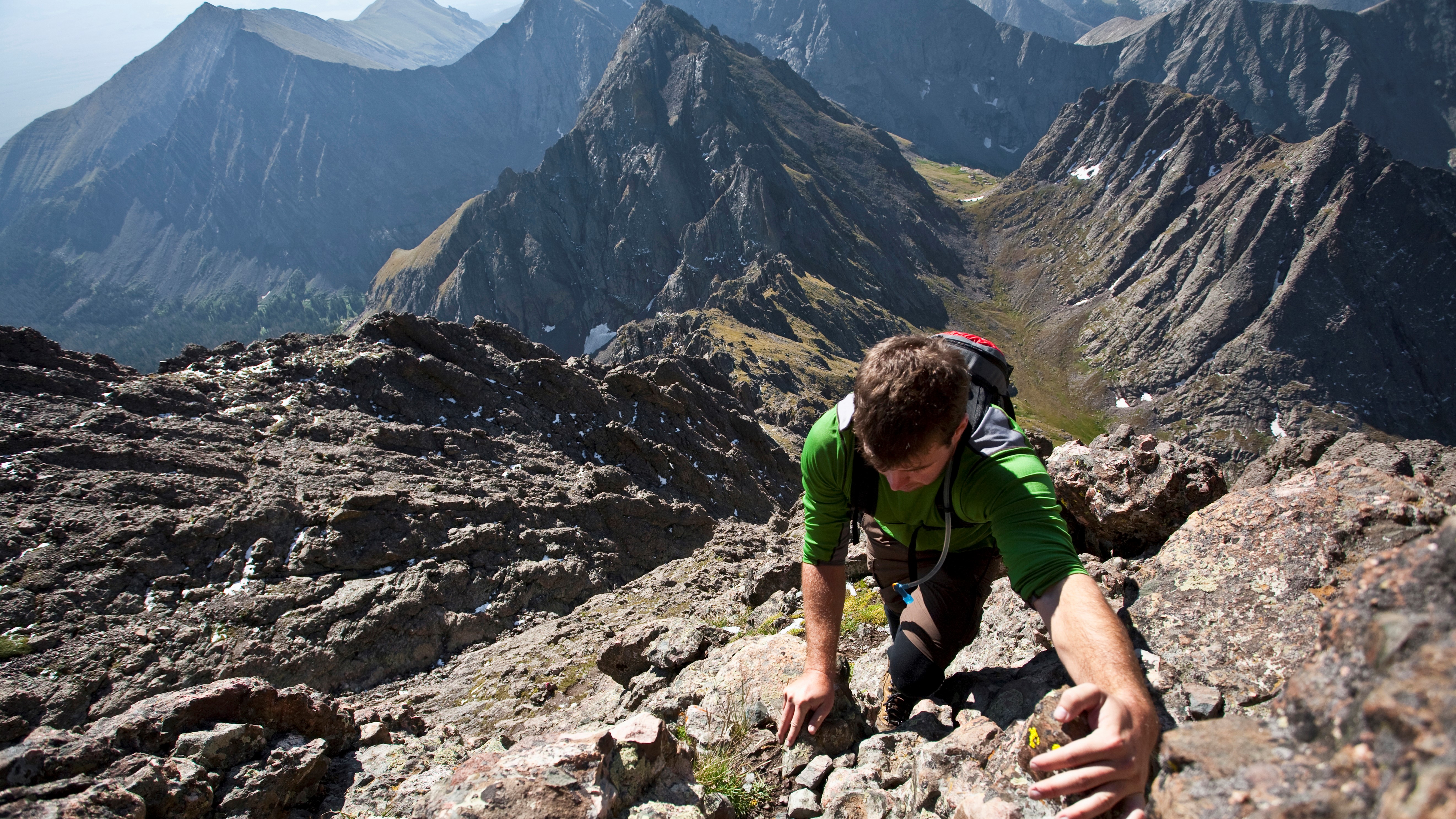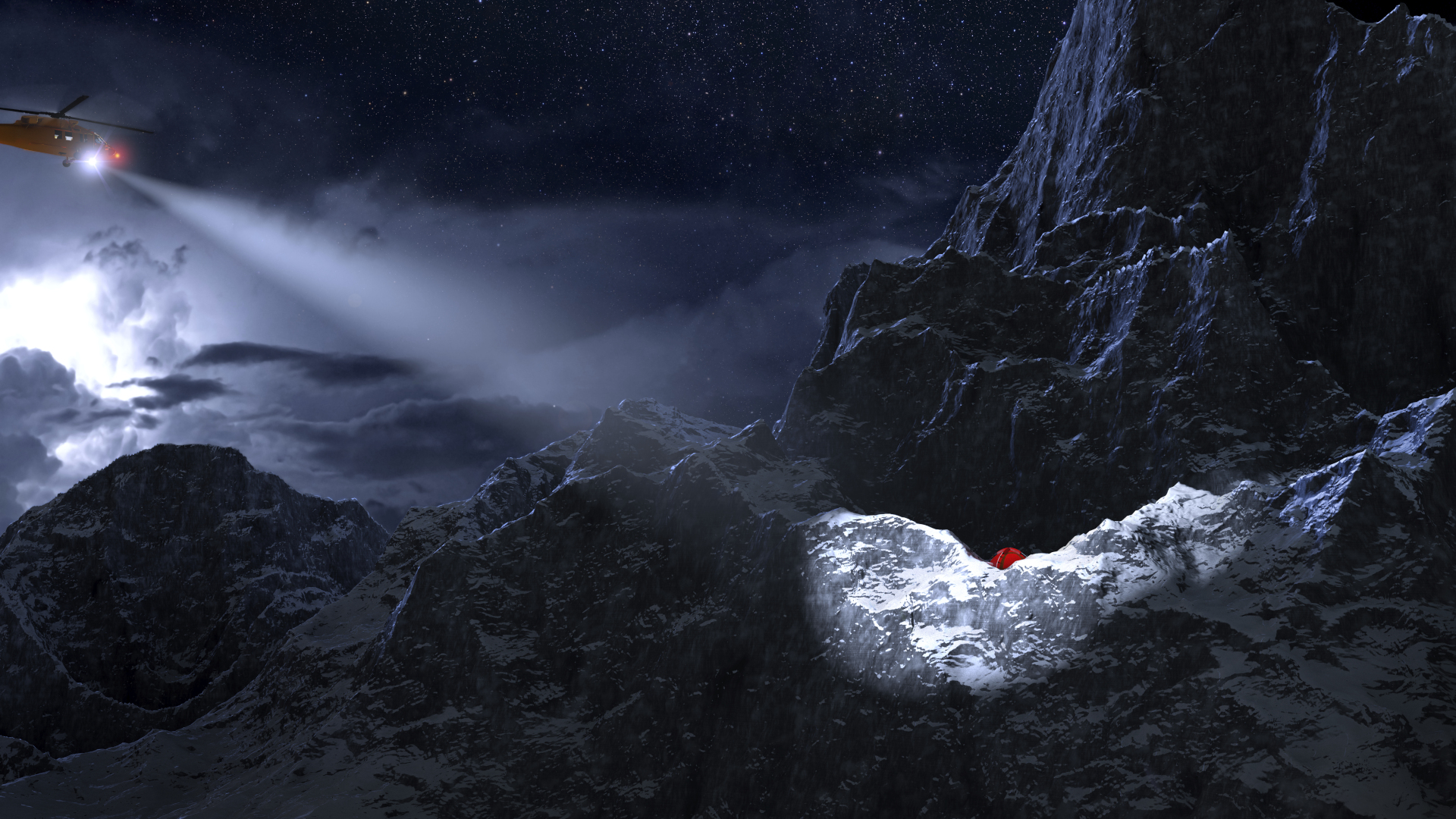
Mountain rescue teams in Colorado started the week by issuing safety warnings to hikers after two separate incidents resulted in overnight rescue missions over the weekend. In both cases, solo hikers were attempting to climb 14ers – mountains over 14,000 feet high – when they became cliffed out and found themselves unable to climb higher or descend.
The first call came in on Saturday evening when a hiker used his cell phone to report that he was cliffed out on Quandary Peak near Breckenridge. Quandary is generally considered one of the easiest 14ers in the state to climb, but only when it's climbed by the standard East Ridge route. According to reporting in the Summit Daily, this hiker was near the summit on the West Ridge, which entails a Class 3 climb according to 14ers.com, and he had boxed himself in.
Rescue crews approached the area by helicopter and established contact with the hiker, but found him in terrain they felt uncomfortable traversing in the dark. Consequently, all teams spent the night at 14,000 feet while a mental health clinician coached the hiker through what the Summit County Sheriff’s Office public affairs sergeant Mike Schilling describes as a "pretty stressful situation."
At sunrise, teams were able to hoist the man to safety via helicopter, but rescuers warn all hikers and climbers of the importance of preparedness when doing route research as well as learning navigation skills.

The following afternoon another solo hiker activated their Garmin In-Reach from the Kirk Couloir, a narrow couloir splitting the cliffs between two 14ers, Kit Carson Peak and Challenger Peak in southern Colorado. According to 14ers.com, this route should only be attempted with stable spring/early summer snow.
A news release from Custer County Search and Rescue reports that the hiker had become stranded on a narrow ledge at 13,400 feet due to mixed rock, snow and ice conditions. Again, the rescue took until the following morning to complete and a video shared by Custer County SAR shows the hiker in deep snow.
Custer County SAR reminds all mountain recreationists that with shorter days and overnight freezing temperatures, winter conditions have arrived in the Colorado mountains and everyone needs to be prepared for challenging conditions and long rescues.
Staying safe in the mountains in winter
Though the calendar says it's autumn, winter conditions have arrived at high altitude and anyone attempting to climb in alpine zones should be equipped with crampons, a helmet, an ice axe and avalanche gear, as well as possessing mountaineering skills. Without this gear and experience, you should consider your 14er season over until next summer.
It's advisable to carry a Garmin InReach device, a satellite communicator that will work even without cell service and has been used by over 10,000 people to get emergency help. It's also important to remember that when conditions are challenging, rescue can take many hours.
"Rescues can take hours to organize, aviation assets are weather and often daylight dependent, and back-country users need to be self-sufficient while waiting on rescue resources to arrive," warns Custer County SAR.
Make sure you are always carrying everything you need to spend the night on the mountain, including a shelter such as a bivy sack, a headlamp, extra warm clothing, water and snacks.







